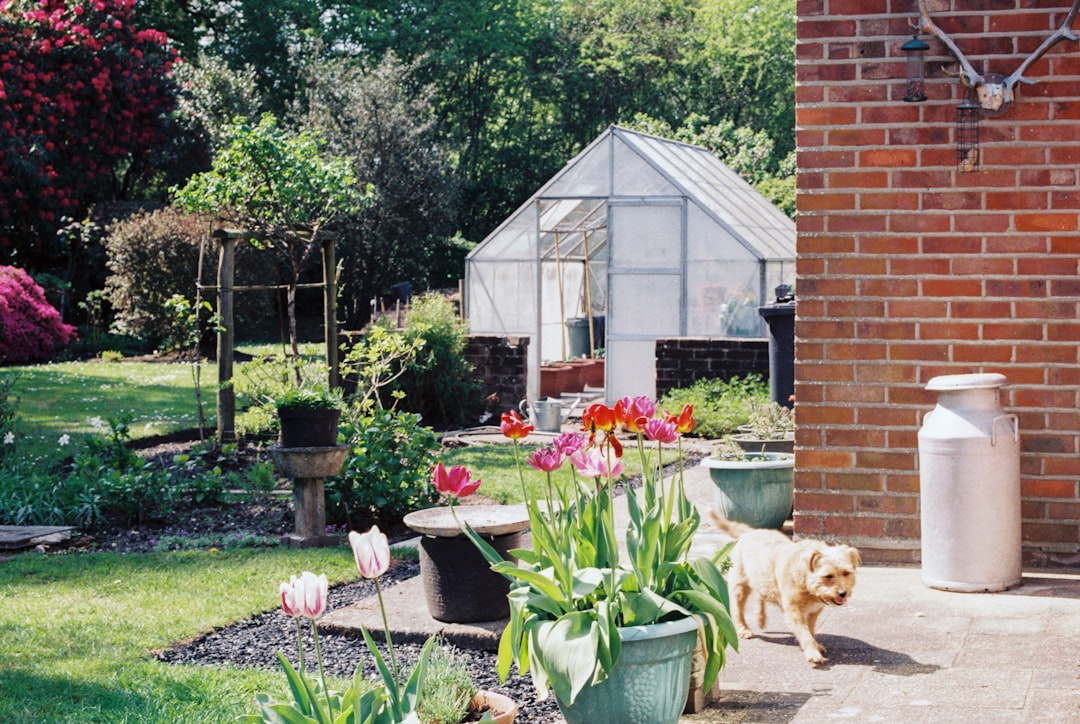The Enchanting World of Aromatic Gardens

In the realm of garden design, color and greenery stand as fundamental pillars, creating a visual symphony that soothes the soul. However, there's another dimension to gardening that often goes overlooked: the sense of smell. The addition of plants with fragrant flowers can transform a garden from a mere visual delight into a multisensory experience that captivates the nose as well as the eyes.
One of the most iconic fragrant flowers is the rose. With its rich, sweet scent, the rose has been a favorite in gardens for centuries. There are countless varieties of roses, each with its own unique fragrance profile. From the classic damask rose with its spicy, clove - like aroma to the delicate tea rose with a sweet, citrusy undertone, roses can be used in various ways in garden design. They can be planted in formal rose beds, where their structured rows create a sense of order and elegance. Or, they can be incorporated into mixed borders, adding a splash of color and a burst of fragrance among other plants.
Another wonderful option for a fragrant garden is the lavender. This herbaceous perennial is known for its calming, floral - herbal scent. Lavender is not only beautiful with its spikes of purple flowers but also highly versatile. It thrives in sunny, well - drained locations, making it perfect for rock gardens or Mediterranean - style gardens. The fragrance of lavender is said to have relaxing properties, and it can be used to create a peaceful and serene atmosphere in the garden. You can plant lavender in mass plantings for a sea of purple and a continuous wave of fragrance, or use it as an edging plant along paths to release its scent as you brush against it.
Jasmine is a climbing plant that brings a heady, sweet fragrance to the garden. Its white, star - shaped flowers bloom in abundance, especially during the summer months. Jasmine can be trained to grow on trellises, arbors, or fences, adding a vertical element to the garden design. As it climbs, it fills the air with its intoxicating scent, creating a romantic and inviting atmosphere. In a small garden, a single jasmine plant can make a big impact, while in a larger space, multiple plants can be used to create a fragrant corridor.
Honeysuckle is another climbing plant that is well - loved for its sweet, nectar - like fragrance. Its tubular flowers come in a variety of colors, including white, yellow, and pink. Honeysuckle is a great choice for attracting pollinators such as bees and hummingbirds to the garden. It can be planted near a seating area so that you can enjoy its fragrance while relaxing outdoors. The plant is also relatively easy to care for, making it suitable for both novice and experienced gardeners.
When designing a garden with fragrant plants, it's important to consider the layout and placement of the plants. Grouping plants with similar fragrance intensities and bloom times together can create a more concentrated and harmonious scent. For example, you can create a 'fragrance corner' in the garden by planting a combination of roses, lavender, and jasmine. You can also use different heights and textures of plants to add visual interest. Taller plants like roses can be placed at the back of a border, while lower - growing plants like lavender can be used in the front.
Seasonal variation is also an important aspect of garden design. Different fragrant plants bloom at different times of the year, so by carefully selecting a mix of plants, you can ensure that your garden has a continuous supply of fragrance throughout the seasons. For instance, in the spring, you can enjoy the fragrance of hyacinths and lilacs, while in the fall, the sweet scent of chrysanthemums can fill the air.
In conclusion, incorporating plants with fragrant flowers into your garden design is a wonderful way to enhance the overall experience of your outdoor space. It not only adds an extra layer of sensory pleasure but also creates a more inviting and relaxing environment. Whether you have a small urban garden or a large rural estate, there are fragrant plants suitable for every style and size of garden. So, go ahead and start planning your aromatic garden today and let the sweet scents of nature fill your days.